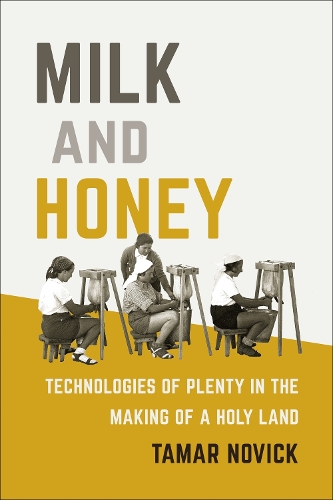
Milk and Honey: Technologies of Plenty in the Making of a Holy Land
(Paperback)
Publishing Details
Milk and Honey: Technologies of Plenty in the Making of a Holy Land
By (Author) Tamar Novick
MIT Press Ltd
MIT Press
15th August 2023
United States
Classifications
General
Non Fiction
Middle Eastern history
Environmental science, engineering and technology
338.1095694
Physical Properties
Paperback
288
Width 152mm, Height 229mm
Description
An innovative historical analysis of the intersection of religion and technology in making the modern state, focusing on bodily production and reproduction across the human-animal divide. In Milk and Honey, Tamar Novick writes a revolutionary environmental history of the state that centers on the intersection of technology and religion in modern Israel/Palestine. Focusing on animals and the management of their production and reproduction across three political regimes-the late-Ottoman rule, British rule, and the early Israeli state-Novick draws attention to the ways in which settlers and state experts used agricultural technology to recreate a biblical idea of past plenitude, literally a "land flowing with milk and honey," through the bodies of animals and people. Novick presents a series of case studies involving the management of water buffalo, bees, goats, sheep, cows, and peoplein Palestine/Israel. She traces the intimate forms of knowledge and bodily labor-production and reproduction-in which this process took place, and the intertwining of bodily, political, and environmental realms in the transformation of Palestine/Israel. Her wide-ranging approach shows technology never replaced religion as a colonial device. Rather, it merged with settler-colonial aspirations to salvage the land, bolstering the effort to seize control over territory and people. Fusing technology, religious fervor, bodily labor, and political ecology, Milk and Honey provides a novel account of the practices that defined and continue to shape settler-colonialism in the Palestine/Israel, revealing the ongoing entanglement of technoscience and religion in our time.
Author Bio
Tamar Novick is a senior research scholar at the Max Planck Institute for the History of Science.
